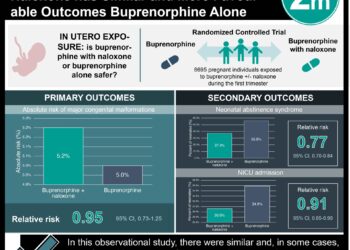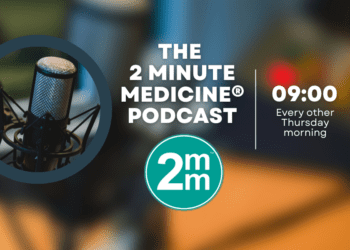Unit-dose packaging of buprenorphine-naloxone associated with reduced pediatric unintentional exposures
1. Pediatric unintentional opioid exposures decreased by more than 75% following the introduction of child-resistant unit-dose packaging (UDP).
2. More than 20% of unintentional buprenorphine-naloxone exposures in children <6 years were associated with moderate or severe outcomes.
Study Rundown: In the past 2 decades, unintentional pediatric opioid poisonings have increased in parallel with the surge of opioid use among adults. Buprenorphine and combination buprenorphine-naloxone agents, commonly used to treat opioid dependence, are responsible for the majority of opioid-related pediatric hospitalizations. Previous studies have shown child-resistant UDP of these treatment agents is associated with reductions in pediatric emergency department visits for unintentional opioid exposure. In this study, investigators analyzed data from a national poison center reporting system to determine the effect of UDP on unintentional pediatric opioid exposures. Results showed pediatric unintentional opioid exposures packaging in children under the age of 6 years declined by more than 75% with use of UDP compared to traditional, non-UDP. More than 20% of patients reported moderate to severe effects from the opioid exposure and almost half of subjects were admitted to the hospital. This study is limited by reliance on caregiver and medical personal exposure reporting to poison centers which may underestimate the actual exposure rate. Results from this study suggest UDP may be an effective way to reduce pediatric healthcare facility visits, hospitalizations, and adverse outcomes related to unintentional opioid and other prescription medication exposures.
Click to read the study, published today in Pediatrics
Relevant reading: Adverse effects in children after unintentional buprenorphine exposure
In-depth [observational study]: Researchers analyzed data from 6217 combination buprenorphine-naloxone product exposures reported to 50 regional poison centers in 48 states from 2008 to 2016 in children <6 years old (51.7% male, median age 2 years). Exposures were split into 3 time periods to reflect changes in packaging use: pre-UDP (2008 to 2010), transition to UDP (2011 to 2012), and post-UDP (2013 to 2016). To account for increased buprenorphine-naloxone prescription rates, investigators calculated exposures per prescriptions dispensed. Results showed there was a 78.8% decrease in unintentional pediatric exposures from the pre-UDP to post-UDP periods (95% CI 76.1%-81.3%, p < .001) during the pre-UDP period, there were 20.57 exposures per 100 000 prescriptions dispensed, compared to 8.77 exposures during the transition to UDP period, and 4.36 exposures during the post-UDP period. A total of 1223 subjects (19.7%) reported moderate side-effects, 114 (1.8%) reported major effects, and 3 subjects died from exposure. About 47% of subjects were hospitalized with nearly half (23.2%) of those admitted to critical care units. There was no significant difference in exposure effect or disposition between the study time periods.
Image: CC/Wiki/Soberconnections
©2018 2 Minute Medicine, Inc. All rights reserved. No works may be reproduced without expressed written consent from 2 Minute Medicine, Inc. Inquire about licensing here. No article should be construed as medical advice and is not intended as such by the authors or by 2 Minute Medicine, Inc.







